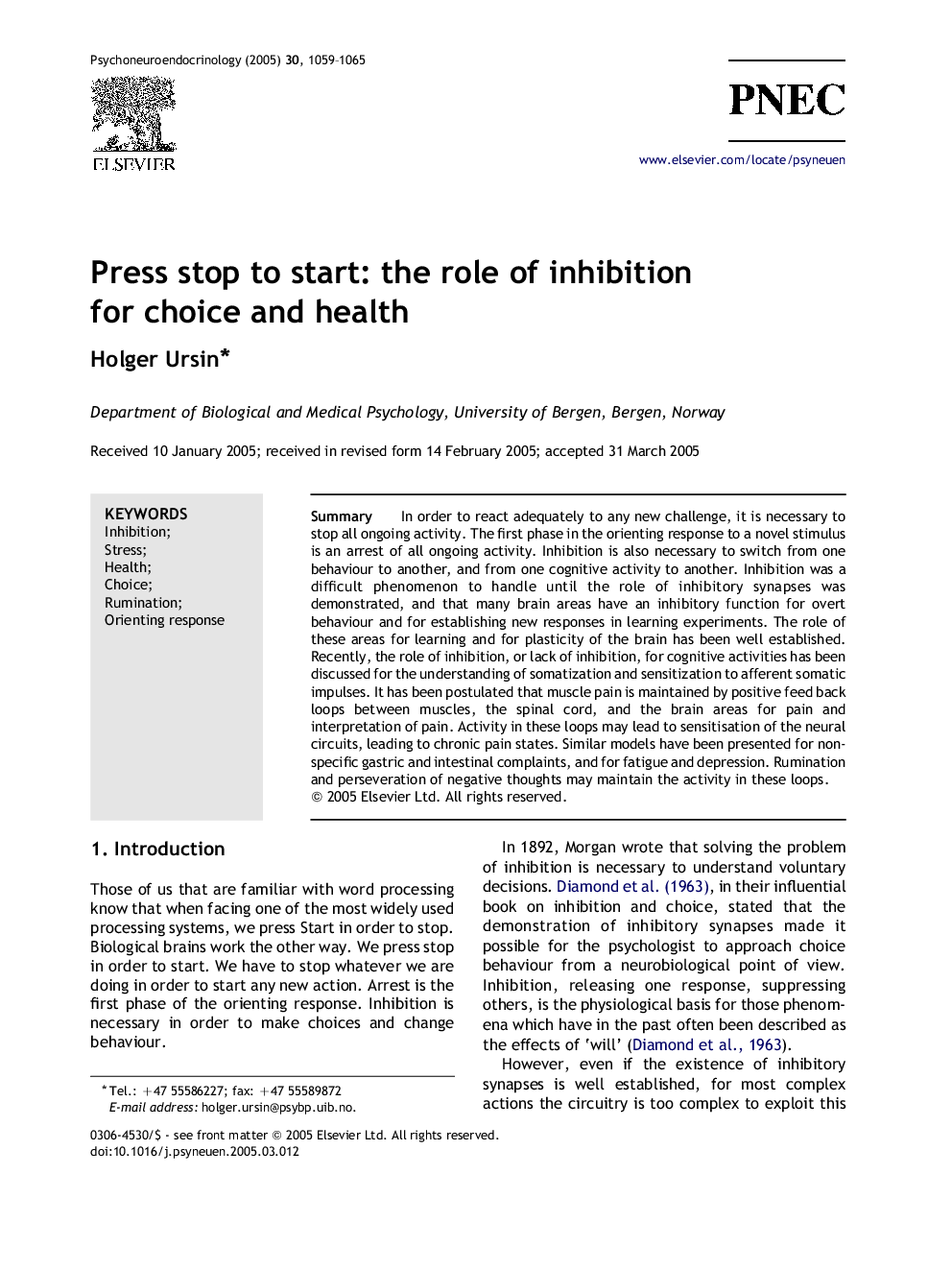| Article ID | Journal | Published Year | Pages | File Type |
|---|---|---|---|---|
| 9646242 | Psychoneuroendocrinology | 2005 | 7 Pages |
Abstract
In order to react adequately to any new challenge, it is necessary to stop all ongoing activity. The first phase in the orienting response to a novel stimulus is an arrest of all ongoing activity. Inhibition is also necessary to switch from one behaviour to another, and from one cognitive activity to another. Inhibition was a difficult phenomenon to handle until the role of inhibitory synapses was demonstrated, and that many brain areas have an inhibitory function for overt behaviour and for establishing new responses in learning experiments. The role of these areas for learning and for plasticity of the brain has been well established. Recently, the role of inhibition, or lack of inhibition, for cognitive activities has been discussed for the understanding of somatization and sensitization to afferent somatic impulses. It has been postulated that muscle pain is maintained by positive feed back loops between muscles, the spinal cord, and the brain areas for pain and interpretation of pain. Activity in these loops may lead to sensitisation of the neural circuits, leading to chronic pain states. Similar models have been presented for non-specific gastric and intestinal complaints, and for fatigue and depression. Rumination and perseveration of negative thoughts may maintain the activity in these loops.
Related Topics
Life Sciences
Biochemistry, Genetics and Molecular Biology
Endocrinology
Authors
Holger Ursin,
